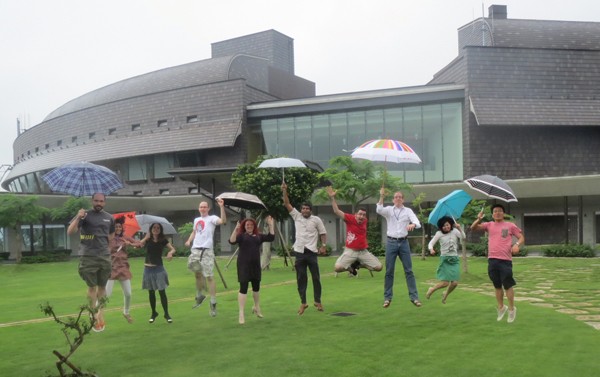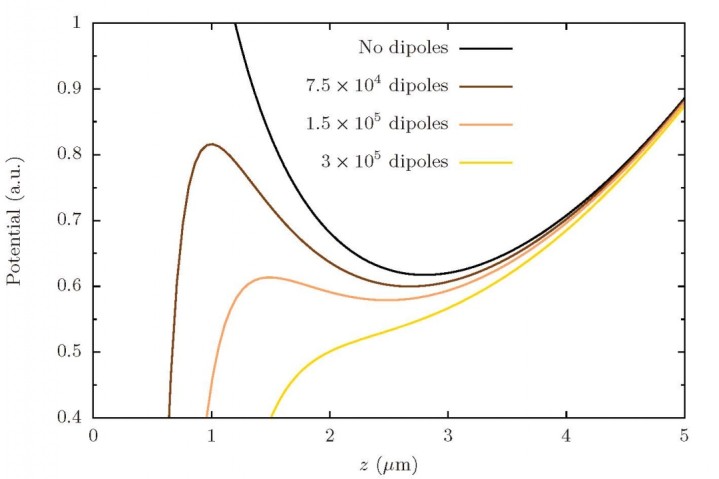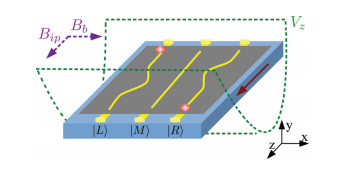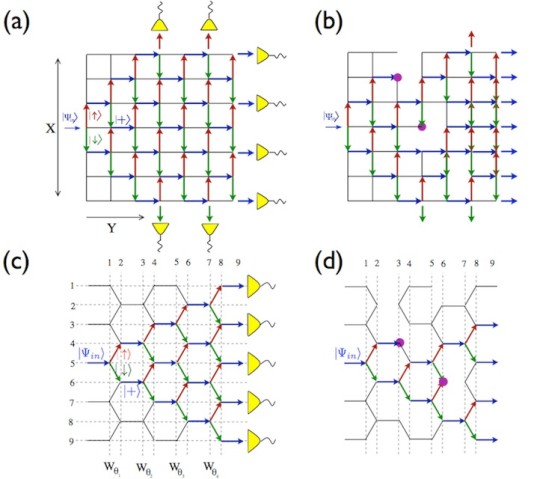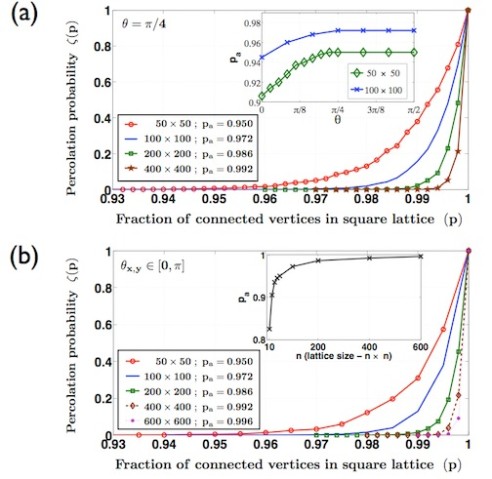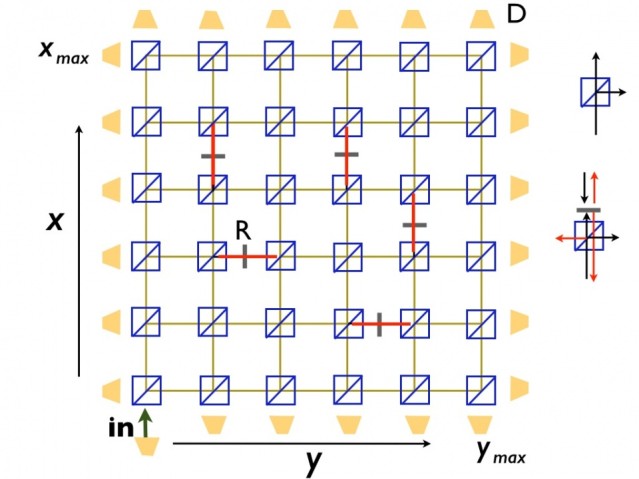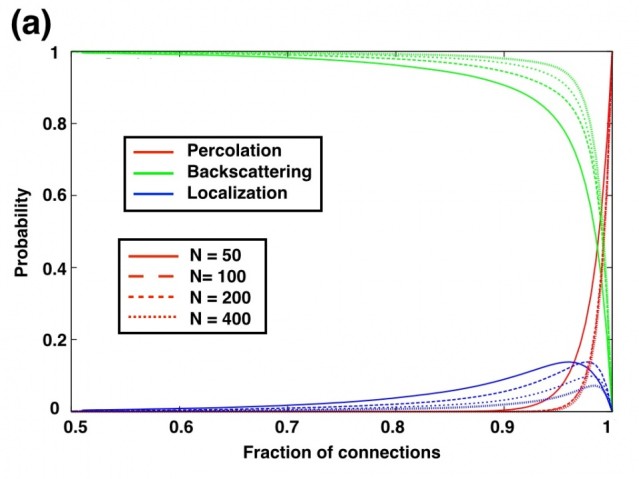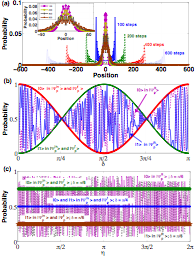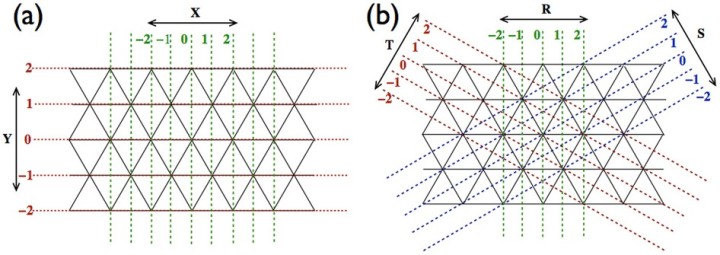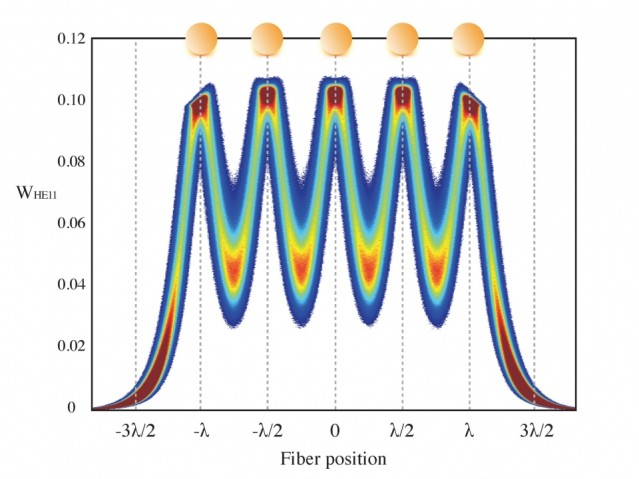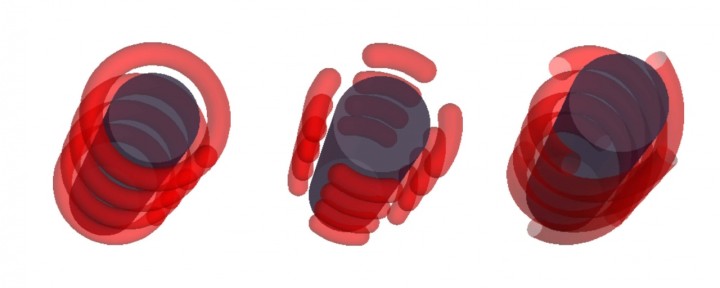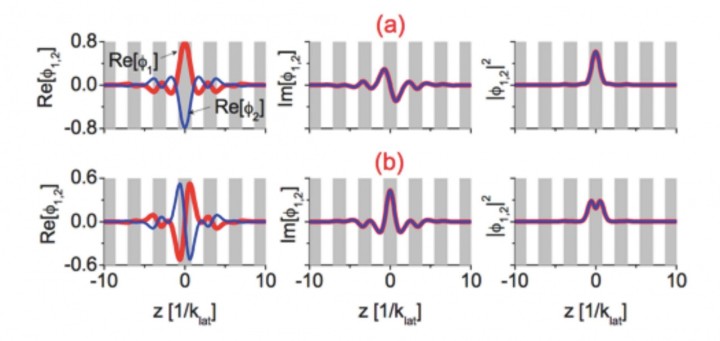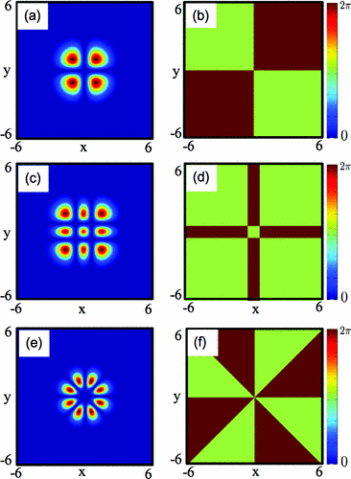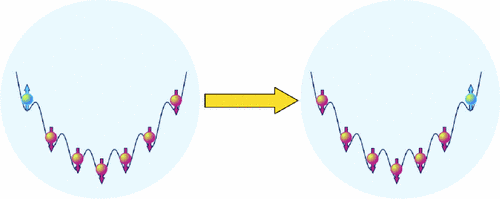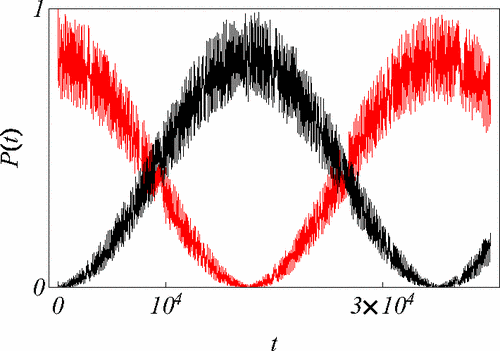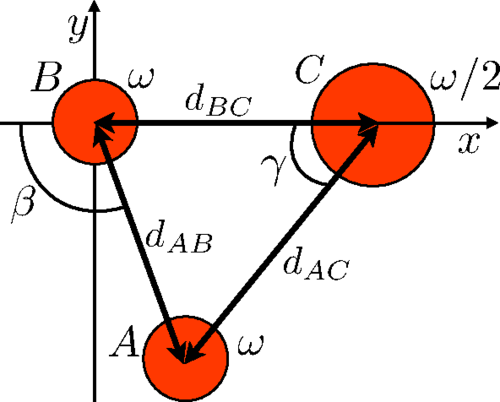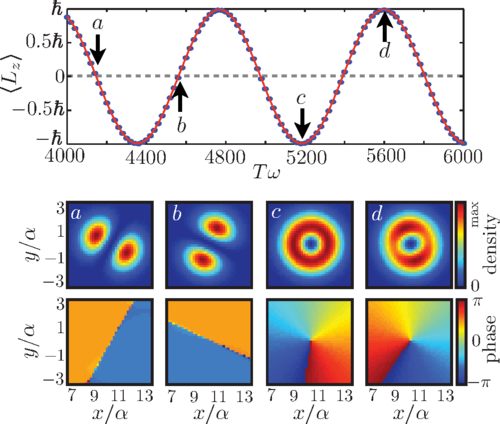Quantum Systems Unit
Associate Professor Thomas Busch
Abstract
Developing ideas for studying and controlling the behaviour of quantum gases, quantum walks and nano-fibres have been the main topics we contributed to during the last year. At the same time we have made first steps into the areas of quantum hybrid systems and control of larger quantum systems, while at the same time establishing new collaborations with other groups worldwide.
1. Staff
- Dr. Chandrashekar Madaiah, Researcher
- Dr. Steve Campbell, Researcher
- Dr. Jérémie Gillet, Researcher
- Dr. Zhang Yongping, Researcher
- Dr. Albert Benseny Cases, Researcher
- Dr. Angela White, Researcher
- Thomás Fogarty, Student
- Tadhg Morgan, Student
- Tara Hennessy, Student
- Lee O'Riordarn, Student
- Anthony Kiely, Research Intern
- Scott Melville, Summer Research Intern
- Zeke Xie, Research Intern
- Sawako Koki, Research Administrator
2. Collaborations
- Theme: Four mode double well models for Bose-Einstein condensates
- Type of collaboration: Joint research
- Researchers:
- M.A. Garcia March, University of Barcelona, Spain
- F. Sols, Universidad Complutense de Madrid, Spain
- Theme: Muti-dimensional SAP
- Type of collaboration: Joint research
- Researchers:
- J. Mompart, Universitat Autonoma de Barcelona, Spain
- V. Ahufinger, Universitat Autonoma de Barcelona, Spain
- Theme: Quantum Correlations
- Type of collaboration: Joint research
- Researchers:
- M. Paternostro, Queen's University Belfast, Northern Ireland
- Theme: Small Quantum Systems
- Type of collaboration: Joint research
- Researchers:
- A. Polls, University of Barcelona, Spain
- M.A. Garcia March, University of Barcelona, Spain
3. Activities and Findings
3.1 Hybrid systems of ions and electric-dipolar gases
Quantum hybrid systems are a promising approach to building versatile quantum machines, as they allow to combine the most promising features of the individual components and also add additional degrees of control. In this project we study a system composed of a gas of ultra cold electric-dipolar molecules situated between two trapped ions and show that such a setup allows to control the position of the ions in the trap.
Trapped ions are one of the forerunner technologies for quantum information processing, as they are a strongly correlated system which can be well isolated from the environment. In our hybrid system the electric field of the ions induces a position dependent polarisation in the molecule gas, which in turn generates an electric field large enough to partially screen the interaction between the ions. The polarisation of the molecules can then be modified with an external electric field, which leads to control over the separation of trapped ions and the possibility to create various ion-crystal geometries.
The figure shows the total potential felt by two 40Ca+ ions (in the relative coordinate) for different dipole densities between them. A change of around 10% is easily achievable.
3.2 Coherent transport by adiabatic passage on atom chips
Spatial Adiabatic Passage (SAP)is an adiabatic technique that allows to move atoms between trapping potentials with a high degree of fidelity. While the basic idea is well understood and has been shown to be robust, experimental implementation is not straightforward as a number of conditions need to be fulfilled.
In this work we have carried out a detailed investigation into the adiabatic transport a single atom between different waveguides on an atom chip using SAP. Using experimentally realistic parameters in a fully three-dimensional simulations we have shown that one can ensure that all conditions are fulfilled and that high fidelities are possible. These three dimensional simulations were carried out on a consumer desktop machine by leveraging the power of graphics-processing-unit computing.
3.3 Quantum percolation on a two-dimensional lattice with random disconnection
While quantum percolation is known to have certain similarities with classical percolation, the quantum case has additional complexity due to the possibility of Anderson localisation. In this work we determined the fraction of connected edges required (the transition point) in a lattice for a two-state particle to percolate with finite (non-zero) probability, using a directed quantum walk dynamics. Three fundamental lattice geometries (finite square lattice, honeycomb lattice, and nanotube structure) are examined and we show that the transition point each time tends towards unity for increasing lattice sizes. To support the numerical results we also use a continuum approximation to analytically derive the expression for the percolation probability for the case of the square lattice and show that it agrees with the numerically obtained results for the discrete case. Beyond the fundamental interest to understand the dynamics of a two-state particle on a lattice (network) with disconnected vertices, this study lays the foundations to shed light on the transport dynamics in various quantum condensed matter systems and the construction of quantum information processing and communication protocols in imperfect situations.
As a continuation of this work we have studied percolation of photons in an imperfect array of beam-splitters, where the dynamics is determined by the interplay between percolation, backscattering and transient localisation. From both these studies one can conclude that even with a directed nature of the evolution, a very high percentage (close to 100%) of well connected lattice sites is required to obtain a non-zero percolation probability even on lattices of finite size. Thee exact values for the transition points on finite lattices however dependent on the lattice type.
3.4 Localized quantum walks as quantum memory
The usefulness of quantum walk dynamics in quantum information processing is well established and in this project we show that a quantum walk process can be used to construct and secure a quantum memory. More precisely, a localized quantum walk with temporal disorder can be engineered to store the information of a single, unknown qubit on a compact position space and faithfully recover them on demand. Since the localization happens with a finite spread in position space, the stored information of the qubit will be naturally secured from the simple eavesdropper. The protocol presented can be adopted to any quantum system for which experimental control over quantum walk dynamics can be achieved.
3.5 Dirac-like Hamiltonian for generating quantum walk on one-, two- and three-dimensional lattices
Starting from the unitary operator used for implementing two-state discrete-time quantum walk on one-, two- and three- dimensional lattice we have shown that one can arrive at a two-component Dirac-like Hamiltonian in continuum limit. Using different pairs of Pauli basis as position translation states we have obtained three different forms of Hamiltonians for evolution on a one-dimensional lattice. This can be extended to two- and three-dimensional lattices using different Pauli basis states as position translation states for each dimension and the external coin operation, which is necessary for the one-dimensional walk is not a necessary requirement for a walk in higher dimensions, but can serve as an additional resource to control the dynamics. The two-component Hamiltonian we find for quantum walks on different lattices can serve as a general framework to simulate, control, and study the dynamics of quantum systems governed by Dirac-like Hamiltonian.
3.6 Detecting trapped atoms using an optical nanofiber
The ability to measure many-atom states with single atom resolution is one of the key requisites for creating and understanding complex many body quantum states. In this project we show that a tapered optical fibre can be used to resolve spontaneous emission from a row of regularly separated Rb87 atoms in an optical lattice with single site resolution.
For this we study the coupling between a row of atoms and the guided modes of an optical nanofiber in a configuration where the axis of the fiber is aligned perpendicularly to the row of regularly separated atoms. This can, for example, be realised when bringing a nano-fiber close to a one-dimensional optical lattice prepared in a Mott Insulator state.
In general the emission characteristics of an atom into a nanofiber mode depends on the radius of the fiber, the position of the atom, the wavelength of the transition and the orientation of the dipole. We show that this technology makes it possible to detect single trapped atoms and to identify unoccupied sites along the edge of an optical lattice.
The figure shows the distribution of the expected emission pattern into a nanofibre of radius 150 nm, when the row of atoms is 100 nm form the fibre surface, taking delocalisation of ±20 nm the atom into account over 200,000 runs.
3.7 Few-mode tapered fibers for detecting and trapping neutral atoms.
Trapping potentials for ultracold atoms can be created using the evanescent fields around a optical nanofibre. While for the fundamental mode of the fibre these are well understood, here we investigated fibers which support a few modes, namely the first fundamental mode HE11 and the next three, HE21, TE01 and TM01. Combining counter propagating red-detuned HE21 modes with a blue-detuned HE11 fundamental mode, for example, allows to form a potential in the shape of four intertwined spirals.
By changing the polarization from circular to linear in each of the two counter-propagating HE21 modes simultaneously the 4-helix configuration can be transformed into a lattice configuration, this is shown in the figure below.
3.8 Gap solitons in Bose-Einstein condensates with a spin-orbit coupled optical lattice
Gap solitons, one of most fundamental features in nonlinear periodic systems, just reside in linear energy gaps of periodic potential. They possess distinctive properties: they are bright solitons but can be supported by both attractive and repulsive interactions, and they are localized solutions but intrinsically relate to extended Bloch waves.
In this project, we have studied the existence and stability properties of gap solitons in a spin-orbit coupled Bose-Einstein condensate in optical lattices. We have found that the fundamental gap solitons have the similar parity with the corresponding Bloch waves from which gap solitons bifurcate. In the second finite gap, there are two families of fundamental modes as shown in the figure. (a) is for one family and (b) is for the other family. These two families have difference spin-dependent parity. Furthermore the density distribution (a) family has one peak, while (b) family has two peaks.
3.9 Tunneling, self-trapping and manipulation of higher modes of a BEC in a double well
A BEC immersed in a double well can have different dynamics depending on its non-linear self-interaction, showing either macroscopic tunneling or self trapping. In this project we have investigated the dynamics of a BEC using a four mode approximation to the double well. We observe and characterize regimes similar to the ones previously known as well as a mixed regime with new equilibrium positions. Our multi-mode systems shows behaviours that allow to interpret it as a simple model for dissipation in Bose Einstein condensates in double well potentials.
The figure shows different phase space trajectories for the excited states when the initial imbalance of the population in the ground states grows larger.
3.10 Stability and dynamics of cross solitons in harmonically confined Bose-Einstein condensates
Dark solitons are fundamental structures that can appear in one-dimensional, non-linear Bose-Einstein condensates with repulsive atom-atom interactions. Extensions to higher dimensions can be made and in two-dimensions they correspond to lines of reduced density. In this work we have examines the stability and dynamics of a family of crossed dark solitons in a harmonically confined Bose-Einstein condensate in two dimensions. Working in a regime where the fundamental snake instability is suppressed, we have shown the existence of an instability which leads to an interesting collapse and revival of the initial state for the fundamental case of two crossed solitons. The instability originates from the singular point where the solitons cross, and we have characterized it by examining the Bogoliubov spectrum. Finally, we have also extend the treatment to systems of higher symmetry.
Density (left column) and phase (right column) of (a) and (b) the cross soliton, (c) and (d) the double-cross soliton, and (e) and (f) a star soliton.
3.11 New spin squeezing and other entanglement tests for two mode systems of identical bosons
For any quantum state representing a physical system of identical particles, the density operator must satisfy the symmetrization principle (SP) and conform to super-selection rules (SSR) that prohibit coherences between differing total particle numbers. In this work we have considered bi-partitite states for massive bosons, where both the system and sub-systems are modes (or sets of modes) and particle numbers for quantum states are determined from the mode occupancies. Defining non-entangled or separable states as those prepared via local operations (on the sub-systems) and classical communication processes, the sub-system density operators are also required to satisfy the SP and conform to the SSR, in contrast to some other approaches. This leads to revised spin squeezing criteria as entanglement tests.
3.12 Quantum state transfer in the presence of nonhomogeneous external potentials
Heisenberg-type spin models in the limit of a low number of excitations are useful tools to study basic mechanisms in strongly correlated and magnetic systems and many of these mechanisms can be experimentally tested using ultracold atoms. In this work we have discussed the implementation of a quantum state transfer protocol in a tight-binding chain in the presence of an inhomogeneous external potential. We have shown that it can be used to extend the parameter range in which high-fidelity state transfer can be achieved beyond the well established weak-coupling regime. Among the class of mirror-reflecting potentials that allow for high fidelity quantum state transfer, the harmonic case is especially relevant because it allows to formulate a proposal for the experimental implementation of the protocol in the context of optical lattices.
Schematic diagram of the physical implementation of the proposed QST protocol. The spins are arranged in a nonhomogeneous potential obtained by applying a site-dependent external field. The goal of the protocol is to transfer the “up” spin (blue) from the first site to the last one.
Dynamics for a chain of eight sites. Full transfer can be achieved and he fast oscillations represent the deviation of the real dynamics from the two-level approximation.
3.13 Tunneling-induced angular momentum for single cold atoms
We have studied the generation of angular momentum carrying states for a single cold particle by breaking the symmetry of a spatial adiabatic passage process in a two-dimensional system consisting of three harmonic potential wells. By following a superposition of two eigenstates of the system, a single cold particle can be completely transferred to the degenerate first excited states of the final trap, which are resonantly coupled via tunneling to the ground states of the initial and middle traps. Depending on the total time of the process, angular momentum is generated in the final trap. This process has been discussed in terms of the asymptotic eigenstates of the individual wells and the results are checked by simulations of the full two-dimensional Schrödinger equation.
Schematic representation of the system of three harmonic traps with broken spatial symmetry. Traps A and B have the same trapping frequency and trap C has a trapping frequency of half that value.
Generated angular momentum as a function of the total time of the process T (upper plot) and final states in the C trap and their phases for four different final total times a, b, c, and d (lower plots).
4. Publications
4.1 Journals
- Global quantum correlations in finite-size spin chains.
Campbell, S., Mazzola, L., De Chiara, G., Apollaro, T. J. G., Plastina, F., Busch, T. & Paternostro, M.
New Journal of Physics15 (2013) - Effect of interparticle interaction in a free oscillation atomic interferometer.
Fogarty, T., Kiely, A., Campbell, S. & Busch, T.
Physical Review A 87, 043630 (2013) - Enhancement of geometric phase by frustration of decoherence: A Parrondo-like effect.
Madaiah, C., Banerjee, S. & Pati, A. K.
Physical Review A87, 042119 (2013) - Quantum gas mixtures in different correlation regimes.
Garcia-March, M. A. & Busch, T.
Physical Review A87, 063633 (2013) - Measurement-Induced Generation of Spatial Entanglement in a Two-Dimensional Quantum Walk with Single-Qubit Coin.
Di Franco, C., McGettrick, M., Machida, T. & Busch, T.
Journal of Computational and Theoretical Nanoscience10, 1613-1616 (2013) - Two-component Dirac-like Hamiltonian for generating quantum walk on one-, two- and three-dimensional lattices.
Madaiah, C.
Scientific Reports3, 2829 (2013) - Shaping the evanescent field of optical nanofibers for cold atom trapping.
Phelan, C., Hennessy, T. & Busch, T.
Optics Express21, 27093-27101 (2013) - Coherent transport by adiabatic passage on atom chips.
Morgan, T., O’Riordan, L. J., Crowley, N., O’Sullivan, B. & Busch, T.
Physical Review A88, 053618 (2013) - Criticality, factorization, and long-range correlations in the anisotropic XY model.
Campbell, S., Richens, J., Lo Gullo, N. & Busch, T.
Physical Review A88, 062305 (2013) - Noise-enhanced quantum transport on a closed loop using quantum walks.
Madaiah, C. & Busch, T.
Quantum Information Processing (2014) - Sharp crossover from composite fermionization to phase separation in microscopic mixtures of ultracold bosons.
Garcia-March, M. A., Juliá-Díaz, B., Astrakharchik, G. E., Busch, T., Boronat, J. & Polls, A.
Physical Review A88, 063604 (2013) - Quantum state transfer in the presence of nonhomogeneous external potentials.
Giorgi, G. L. & Busch, T.
Physical Review A88, 062309 (2013) - Stability and dynamics of cross solitons in harmonically confined Bose-Einstein condensates.
Morgan, T. & Busch, T.
Physical Review A88, 063610 (2013) - New spin squeezing and other entanglement tests for two mode systems of identical bosons.
Dalton, B. J., Heaney, L., Goold, J., Garraway, B. M. & Busch, T.
New Journal of Physics16, 0130206 (2014) - Tunneling-induced angular momentum for single cold atoms
Menchon-Enrich, R., McEndoo, S., Mompart, J., Ahufinger, V. & Busch, T.
Physical Review A89, 013626 (2014) - Tunneling, self-trapping, and manipulation of higher modes of a Bose-Einstein condensate in a double well
Gillet, J., Garcia-March, M. A., Busch, T. & Sols, F.
Physical Review A89 (2014) - Single photons in an imperfect array of beam-splitters: interplay between percolation, backscattering and transient localization
Madaiah, C., Melville, S. & Busch, T.
Journal of Physics B: Atomic, Molecular and Optical Physics47 (2014)
4.2 Books and Other One-Time Publications
Nothing to report
4.3 Conference Invited Lecture
- Impurities in Low-Dimensional Quantum Gases, in 557. Wilhelm und Else Heraeus-Seminar Trapped Ions Meet Cold Atoms, Physikzentrum Bad Honnef, Germany (2014).
Busch, T. - Using localised Quantum Walks as Device-independent Quantum Memory, in Quantum simulations and quantum walks, Pisa, Italy (2013).
Busch, T.
4.4 Conference Oral Presentation
- Secured Quantum Memory by Induced Localization, in Coherent Control of Complex Quantum Systems 2013, OIST, Okinawa, Japan (2013).
Madaiah, C. - Dynamics and Stability of Cross Solitons, in 20th Central European Workshop for Quantum Optics, Stockholm, Sweden (2013).
Morgan, T. - Global quantum correlations in finite-size spin chains, in Quantum Information Processing and Communication International Conference (QIPC 2013), University of Florence, Florence, France (2013).
Campbell, S. - Preparation of non-classical states for interacting particles, in The 29th Quantum Information Technology Symposium (QIT29), Tokyo, Japan (2013).
Busch, T. - General Quantum Correlations in Critical Spin Systems, in The 29th Quantum Information Technology Symposium (QIT29), Tokyo, Japan (2013).
Campbell, S. - Quantum walk as secured quantum memory, in 2014 Joint Mathematics Meetings, Baltimore Convention Center, Baltimore, USA (2014).
Madaiah, C. - Secured quantum memory using quantum walks, in Interdisciplinary Workshop on Quantum Device--towards operation of the quantum information and the quantum computer--2014, National Istitute of Informatics (2014).
Madaiah, C. - Stability and decay of toroidally trapped two-component spinor condensates, in Interdisciplinary Workshop on Quantum Device--towards operation of the quantum information and the quantum computer--2014, National Institute of Informatics, Tokyo, Japan (2014).
White, A.
4.5 Conference Poster Presentation
- Tunneling, self trapping and manipulation of higher modes of a BEC in a double well, in New Trends in Complex Quantum Systems Dynamics 2013, Cartagena, Spain (2013).
Gillet, J., Garcia-March, M. A., Busch, T., Carr, L. D. & Sols, F. - Orthogonality Catastrophe in Mesoscopic Atomic Ensembles, in International Conference on Few-body Physics in Cold Atomic Gases, Beijing, China (2013).
Fogarty, T., Goold, J., Lo Gullo, N., Patemostro, M. & Busch, T. - Global correlations in finite-size spin chains, in Coherent Control of Complex Quantum Systems 2013, OIST, Okinawa, Japan (2013).
Campbell, S., Mazzola, L., De Chiara, G., Apollaro, T. J. G., Plastina, F., Busch, T. & Paternostro, M. - Creating N00N states in a free oscillation atom interferometer, in Coherent Control of Complex Quantum Systems 2013, OIST, Okinawa, Japan (2013).
Fogarty, T., Kiely, A., Campbell, S. & Busch, T. - Tunneling, self trapping and manipulation of higher modes of a BEC in a double well, in Coherent Control of Complex Quantum Systems 2013, OIST, Okinawa, Japan (2013).
Gillet, J., Garcia-March, M. A., Busch, T., Carr, L. D. & Sols, F. - Tapered optical nanofibres as detectors for trapped atoms in a 1D optical lattice, in Coherent Control of Complex Quantum Systems 2013, OIST, Okinawa, Japan (2013).
Hennessy, T., Phelan, C. F. & Busch, T. - Simulating 3D atomic dynamics using a GPU accelerated split-operator method, in Coherent Control of Complex Quantum Systems 2013, OIST, Okinawa, Japan (2013).
O'Riordan, L., Morgan, T. & Busch, T. - Bose-Einstein condensates in spin-orbit coupled optical lattices, in Coherent Control of Complex Quantum Systems 2013, OIST, Okinawa, Japan (2013).
Zhang, Y. & Zhang, C. - Non-classical states of interacting atoms in an atom interferometer, in ICOLS 2013 (21th International Conference on Laser Spectroscopy) Berkeley, California, USA (2013).
Busch, T., Campbell, S., Fogarty, T. & Kiely, A. - Tapered optical nanofibres as detectors for atoms trapped in an 1D optical lattice, in ECAMP11 (11th European Conference on Atoms, Molecules and Photons 2013), Aarhus, Denamrk (2013).
Hennessy, T., Phelan, C. & Busch, T. - Strongly Correlated Quantum Gases in Superfluid Environments, in Strongly Correlated Electron Systems 2013, The University of Tokyo, Tokyo, Japan (2013).
Garcia-March, M. A., Fogarty, T., Campbell, S. & Busch, T. - Stirring a Tonks-Girardeau gas on a ring trap, creation and analysis of non-classical states, in New Horizon in Quantum Information Science, Yukawa Institute for Theoretical Physics, Kyoto University (2014).
Gillet, J., Fogarty, T. & Busch, T. - Hybrid systems of ions and electric-dipolar condensates, in 557. Wilhelm und Else Heraeus-Seminar Trapped Ions Meet Cold Atoms, Physikzentrum Bad Honnef, Germany (2014).
Benseny, A. & Busch, T.
4.6 Seminar
- Tunneling, self trapping and manipulation of higher modes of a BEC in a double well, Universitat Autonoma de Barcelona, Bellaterra, Spain (2013).
Gillet, J. - Tunneling, self trapping and manipulation of higher modes of a BEC in a double well, Universitat de Barcelona, Barcelona, Spain (2013).
Gillet, J. - Tunneling, self trapping and manipulation of higher modes of a BEC in a double well, Universite de Liege, Liege, Belgium (2013).
Gillet, J. - Non-Classical States in Cold Atomic Gases, University of Kaiserslautern, Germany (2013).
Busch, T. - Ultracold Atoms and Optical Nano-fibres, University of Barcelona, Spain (2013).
Busch, T. - A few good measures: Using quantum correlations to understand nature, Heinrich Heine University Düsseldorf, Düsseldor, Germany (2013).
Campbell, S. - Quantum Walks: Fundamental Ideas and Applications, The University of Padova, Italy (2013).
Busch, T. - Quantum Walks: Fundamental Ideas and Applications, The University of Ulm, Germany (2013).
Busch, T. - Quantum Walks: Fundamental Ideas and Applications, Saarland University, Germany (2013).
Busch, T. - Localized quantum walks as secured quantum memory, Indian Institute for Science Education and Research (IISER) Pune, India (2014).
Madaiah, C. - Device-independent and secured quantum memory using quantum walks, Tata Institute of Fundamental Research (TIFR)-Hyderabad, India (2014).
Madaiah, C. - Device-independent and secured quantum memory using quantum walks, Indian Institute of Science (IISc), Bangalore, India (2014).
Madaiah, C.
5. Intellectual Property Rights and Other Specific Achievements (Heading 3)
Nothing to report
6. Meetings and Events
6.1 Seminar
- Title: A universality class of discrete-time quantum walks on some graphs
Date: April 24, 2013
Venue: OIST Campus
Speaker: Norio Konno, Professor (Yokohama National University, Japan) - Title: Limit theorem of a 2-state quantum walk with a non-localized initial state
Date: April 24, 2013
Venue: OIST Campus
Speaker: Takuya Machida (Post-doc, The University of Tokyo) - Title: Ultracold atoms in the combined potential of an optical lattice and a harmonic trap
Date: January 7, 2014
Venue: OIST Campus
Speaker: Tomotake Yamakoshi (PhD Student, he University of Electro-Communications, Japan) - Title: Contrast oscillations of the BEC-based atomic interferometer (theory)
Date: January 8, 2014
Venue: OIST Campus
Speaker: Shinichi Watanabe (Professor, The University of Electro-Communications, Japan) - Title: Effect of artificial gauge field on Supersolid phase in ultracold atomic condensates
Date: February 10, 2014
Venue: OIST Campus
Speaker: Rashi Sachdeva (Post-doc, Indian Institute of Technology, Kanpur (IITK), India) - Title: Vortex and soliton in the Gross-Pitaevskii equation for spin-orbit coupled Bose-Einstein condensates
Date: February 25, 2014
Venue: OIST Campus
Speaker: Hidetsugu Sakaguchi (Associate Professor, Kyushu University, Japan) - Title: Topological phases and symmetry tunings of quantum walks
Date: March 4. 2014
Venue: OIST Campus
Speaker: Hideaki Obuse (Assistant Professor, Hokkaido University, Japan) - Title: Cold atom quantum simulators with synthetic gauge fields and dynamical gauge fields
Date: March 10, 2014
Venue: OIST Campus
Speaker: Kenichi Kasamatsu (Associate Professor, Kinki University, Japan) - Title: Combined effects of disorder and interactions in 2D fermionic systems at superconducting temperatures
Date: March 11, 2014
Venue: OIST Campus
Speaker: Luca Dell'Anna (Assistant Professor, University of Padova, Italy) - Title: Experimental investigation of spin-orbit coupled BECs in an optical lattice
Date: March 18, 2014
Venue: OIST Campus
Speaker: Peter Engels (Associate Professor, Washington State University, USA)
6.2 Workshop
Title: Coherent Control of Complex Quantum Systems 2013
Date: May 8- May11, 2013
Venue: OIST Seaside House
Co-organiser: Masahito Ueda, The University of Tokyo, Japan
Klaus Mølmer, Aarhus University, Denmark





